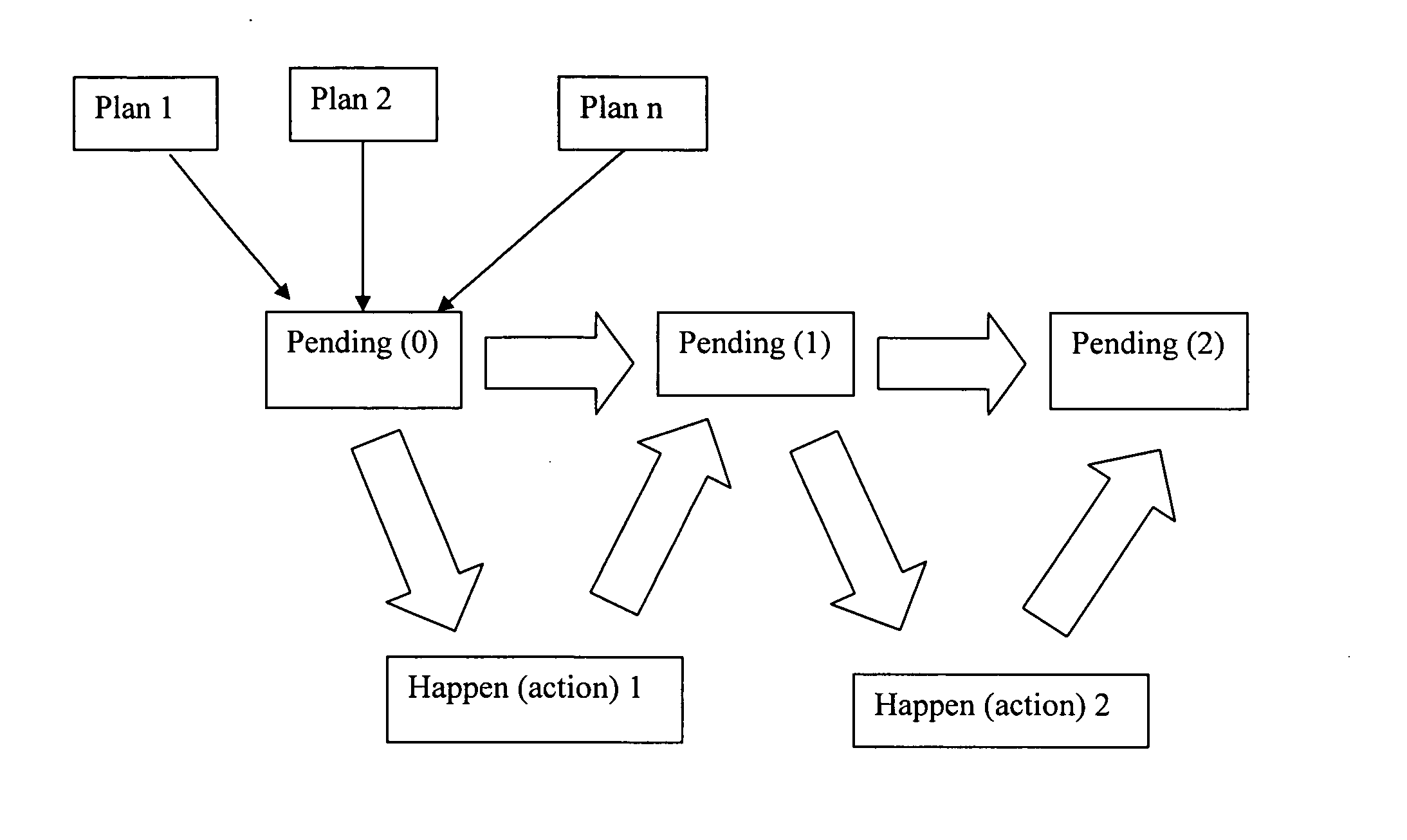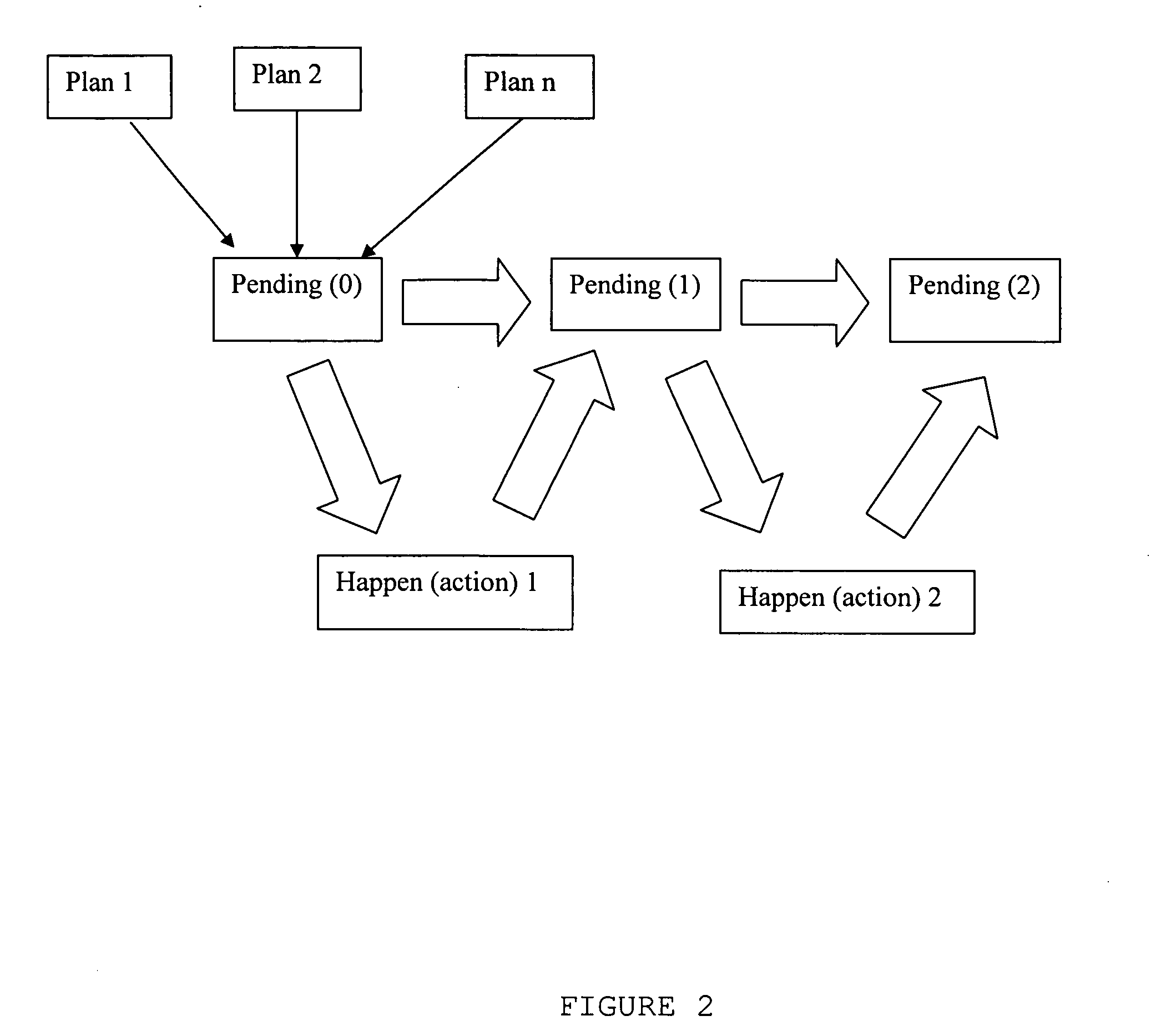Recognition plan/goal abandonment
a recognition plan and goal technology, applied in the field of recognition of events, can solve the problems of increasing the risk of unauthorized access, affecting the performance of the system, and affecting the success of the system,
- Summary
- Abstract
- Description
- Claims
- Application Information
AI Technical Summary
Benefits of technology
Problems solved by technology
Method used
Image
Examples
Embodiment Construction
[0035] The plan recognition system described herein is based on a model of the execution of hierarchical plans rather than of plans as formal models of syntactic entities. This different modeling approach gives rise to different intuitions about how plans should be recognized. Plan recognition algorithms typically require as an input a set of plans that are to be recognized. Example formal definitions for such plans are provided below, although for purposes of discussion it is convenient to discuss such plans with a less formal representation as partially ordered “and / or” trees having “and nodes” and “or nodes,” where the children of the “and nodes” may be partially ordered.
[0036] As an example, FIG. 1 displays a simplified set of hierarchical plans taken from a computer network security domain. The trees of FIG. 1 define a decomposition of root goals (Brag, Theft, Denial of Service) into sequences of sub-actions that will achieve the root goals. Such a decomposition is indicated i...
PUM
 Login to View More
Login to View More Abstract
Description
Claims
Application Information
 Login to View More
Login to View More - R&D
- Intellectual Property
- Life Sciences
- Materials
- Tech Scout
- Unparalleled Data Quality
- Higher Quality Content
- 60% Fewer Hallucinations
Browse by: Latest US Patents, China's latest patents, Technical Efficacy Thesaurus, Application Domain, Technology Topic, Popular Technical Reports.
© 2025 PatSnap. All rights reserved.Legal|Privacy policy|Modern Slavery Act Transparency Statement|Sitemap|About US| Contact US: help@patsnap.com



